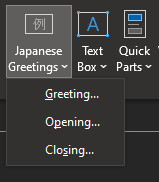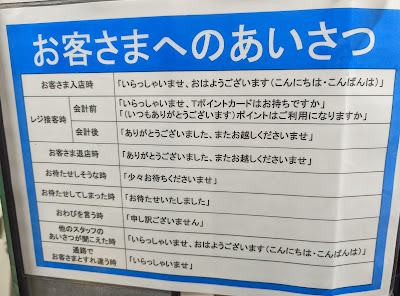How can I write a letter in Japanese? Description of the writing format of Japanese letters.
Introduction
In Japan, although the writing method of personal letters is free, there are specific format requirements when writing formal letters. Writing a letter according to the format is also to express your respect and sincerity to the other party. In order not to let your letter make the other party feel impolite, let's learn the writing format of Japanese letters ~
During the period of daily Japanese language development, the use of the expressive association is called "「頭語(とうご)」" (literally, 'head language'), "「拝啓(はいけい)」," and "「謹啓(きんけい)」."
A greeting about climate or season will be added after head language, which can make the other party read the letter comfortably.
In general, the head language will use "「拝啓(はいけい)」," and the corresponding peroration is "「敬具(けいぐ)」."
If you want to be more polite, for example, when writing some work letters, you will use "「謹啓(きんけい)」," and the corresponding conclusion is "「謹言(きんげん)」" and "「謹白(きんぱく)」."
The elemental composition of a correct Japanese letter has four elements, the Japanese Greetings, the Japanese Openings, the Japanese Closings, and the Signature.
The Japanese Greetings is composed of "「頭語(とうご)」," greetings about the weather season, and greetings about whether the other party is safe. But on business occasions, the first sentence is generally to thank customers for using its products or services.
So, How do I write the Japanese Greetings, Openings, and Closings?
In fact, you don't need to learn how to write it because it is highly repetitive and fixed, and you don't need to make sentences at all.
Microsoft word has tools to import XX directly. Just use it!
 |
| Insert |
You can directly click the "insert" button and then find the "Japanese greetings" tab.
 |
| Japanese Greeting |
Then, be free to choose the greeting you want.
Microsoft Word is brilliant. It will help you choose the greetings of the corresponding season according to your current time so that you can be faster and more efficient.
 |
| Input Method |
However, please note that your computer may need to install the Japanese input method, and you may need to set the language option of Microsoft Word.
 |
| The Microsoft Word generated sentence. |
You just need a few clicks to enter these; they must be correct and appropriate.
In business situations, it is slightly different.
For Example(Letter from Matsuya Food):
謹啓
いつもご利用いただきまして、誠にありがとうございます。
この度お客様の口座に戻ってきた〇〇円の金額につきまして
不安な思いをさせてしまいまして、誠に申し訳ございませんでした
口座に戻ってきた〇〇円についてですが、数回前に注文した時の
・ご注文したメニュー
・ご注文した日と時間
・ご注文番号、または決済番号
上記を教えていただいてもよろしいでしょうか?
お忙しい中、申し訳ございません。
よろしくお願いいたします。
謹白
株式会社 松屋フーズ
〇〇地区マネジャー
〇〇 〇〇
Example(Letter from Japan Post Bank, The main text only):
平素は、ゆうちょ銀行をご利用いただき、誠にありがとうございます。
さて、お客様からお申込みをいただきました口座につきまして、お手続きが完了いたしました。つきましては、通帳をお送りいたしますので、ご査収くださいますようお願い申し上げます。
また、同時にキャッシュカードをお申込みいただいている場合は、別途お送りいたしますので、いましばらくお待ちくださいますようお願いいたします。
今後とも一層のご愛願を賜りますようお願い申し上げます。
"ご利用いただき、誠にありがとうございます" appears in these two letters, which is a sentence often used by companies. You can remember it and then try to ignore it because it helps you improve your reading speed. It is a meaningless sentence.
The above two examples are examples of natural scenes. I hope these two letters can help you.
Have a good day!


Comments
Post a Comment